Recipe, pages 76-77.
This is a relatively simple recipe from the Alinea Restaurant cookbook. It’s a pretty easy recipe. Not too many ingredients or steps. All you have to do is find some green almonds. I was at my local market, North Park Produce, when I just so happened to find some. Passed by these bags and bags of the stuff. One bag for US$3.69. Had to get one.
Another thoughtful combination of complementary ingredients. Green almonds, tasting almost grassy or cucumber-like, encased within a cucumber jello shot. Mmmm. So here we go…
About Green Almonds
Green almonds, or Spring almonds, are the unripe fruit of the sweet almond tree (Prunus amygdalus dulcis), available fresh for roughly six weeks, from April to June. The almond shell inside has not yet hardened, and its interior kernel is soft and cucumber-like in taste.There are also bitter almonds. From The Bittersweet Almond Saga, “Bitter almonds are poisonous and unpalatable, and therefore, not eaten. However, when you add almond extract to your baked treats, the process began with bitter almonds. Bitter almonds are cultivated to extract their highly valued essential oils. The bitterness comes from prussic acid, which is destroyed by heating the almonds, then extracting the oil, which is used for flavoring. The processed bitter almond is also used in making Amaretto, an almond flavored liqueur. Almond oil, an expensive culinary oil, also comes from the bitter almond.”
Some interesting facts about California almonds:
- Almonds were introduced to California in the mid 1700s.
- The state’s 6,000 almond growers produce 100 percent of the commercial domestic supply and 80 percent of the world’s supply.
- Almonds are California’s largest tree nut crop in total dollar value and acreage, and the seventh largest food export market.
Cucumber Gelée
Ya ever wonder why in God’s name English cucumbers always come shrink-wrapped in plastic? I do. So I looked it up. According to OChef.com, they are “sold wrapped in plastic to reduce water loss, and so is usually not waxed and therefore does not need peeling.” I also found out the following about English cucumbers:
- Their seeds are much smaller and less prominent.
- The seeds in a cucumber are what make it bitter, so a semi-seedless English cucumber is less likely to be bitter.
- It has been bred to be more easily digested than some other varieties.
They’re very easy to find. I got a couple at my local Albertson’s. Even they had them.
I quartered them lengthwise and removed the seeds, keeping the skin on. I reserved the seeds and interiors for Penny, my kids’ African hingeback tortoise (she loves the stuff almost as much as strawberries).
I soaked the gelatin sheets in cold water until pliable. Then wrung out and set aside in a small bowl.
Then I juiced the cucumbers in my Breville Juice Fountain Elite juicer.
Then strained through a chinois.
Juicing with the skin-on produces a beautifully bright green shade of cucumber juice.
Perfect for our gelée. I heated about 50g of the juice almost to a boil. Then whisked in the gelatin until dissolved, and removed from the heat.
Poured the warm liquid into a stainless bowl and whisked in the sugar and salt until dissolved. Then slowly added the rest of the cucumber juice while whisking.
I tasted. Woah. Again with the salt. I don’t get it. I’d not even add salt to this if I were you, or barely salt to taste if you want.
Don’t get me wrong. I like salt. Just as much as the next guy. For instance, did you know that Roman soldiers were sometimes paid in salt, which is where the word salary comes from? Okay maybe I know a little bit more than the next guy.
But there’s gotta be a limit to one’s daily intake.
Errata:
Page 76. In “Cucumber Gelée,” component recipe in GREEN ALMOND, Sweet, Hot, Sour, Salt, change “5 g (.2 oz) kosher salt” to “pinch kosher salt.”The recipe calls for 5g salt, which made this small amount of gelée waaay to salty. That’s actually 1965mg of sodium, or over 246mg per serving. The U.S. Recommended Daily Allowance (RDA) for sodium is 2400mg.
I think the point is to make a more-or-less neutral gel, and spice at the end with the sweet, hot, salt and sour ingredients. So perhaps this is another undocumented typo in the first edition. In any event, I’d use less salt.
I lined a 9×12 inch glass pan with plastic wrap, creating a dam with a bit of cardboard placed underneath.
Added a layer of the hot cucumber gelatin, straining through a chinois, and refrigerated until it set up.
Then peeled the green almonds. Don’t do this too early, as they’ll start to brown very quickly. Using a paring knife, I slit the soft, fuzzy grey-green hull lengthwise. You can feel the knife against the almond shell inside. Don’t use too much pressure, as the almond shell’s still soft. You can then pop open the hull and remove the shell pretty easily. When they’re young, you can eat the almond shell-and-all. Inside the shell is the kernel, or as we generally know it, the “nut.”
I reserved them in a small bowl. I thought of covering them with some water and citric acid to preserve, but didn’t want it to affect the taste. So I moved quickly.
Removed the gelatin from the fridge, and placed the almonds on top, spaced about 1.25 inches apart. Then poured another really thin layer around them, and refrigerated. Don’t pour too much in at this point, as they’ll start floating all over the place and you’ll have to start this step over (guess how I know). You want just enough to hold them in their places.
After that had set up, I poured the remainder in and re-refrigerated until set.
Ingredients
Water
Rousselot “silver” gelatin sheets, from L’Epicerie
English cucumbers
C&H cane sugar
Diamond Crystal kosher salt
Fresh green almonds
To Assemble and Serve
While the gel was setting, I assembled my mise en place:

With a mortar and pestle, I roughly crushed a couple of sugar cubes and reserved to my prep area.
Also reserved the citric acid powder, Maldon sea salt and cayenne pepper powder in small bowls to the prep area.
Then I removed the cucumber gel from the fridge again. Lifting with the plastic wrap, I transferred the gel to a silpat mat. Taking a knife dipped in hot water I carefully squared off the rough edges, then cut out eight squares. Trying to get clean edges.
Placed the cucumber gel squares on a sheet of acetate in my prep area. Now to top off.
I put the gelée squares on small brushed aluminum plates (actually supposed to be candle-holders).
Then placed a small pinch of cayenne on one corner, a pinch of citric acid on another, a large flake of Maldon sea salt on another, and a small nugget of sugar on the last. Sounds easy enough, right? Look at the picture in the book and it’s perfect. I ended up using tweezers and a chopstick to get the powders just right.
Styling food is a talent for very patient, obsessive compulsives.
Ya gotta get it right the first time. And fast.
If you need to wipe off the gel square (say, for example, your cayenne goes all over the place), it messes up the shiny, pristine top. The salt and citric acid will also soak up the moisture from the gel like a sponge. If you wait too long, they will turn to blobs of liquid atop the squares.
Then serve fast. Tell your guests to shut up and shoot the suckers before they melt.
Most of my guests liked them — and the combination of hot, sweet, sour and salt. But a few did say this was too salty.
Ingredients
Sugar cubes
Bali or Malden sea salt
Cayenne pepper powder
Citric acid
Equipment
Salter digital scale
Measuring bowls
Kitchen knife and cutting board
Chinois
Glas bowl
Stainless bowl
Breville Juice Fountain Elite juicer
Medium saucepans
Wire whisks
Plastic wrap
9×12 Pyrex glass pan
Paring knife
Tweezers
Yields: 8 servings.
Next, RASPBERRY, Goat’s Milk, Red Pepper Taffy, Pistachio
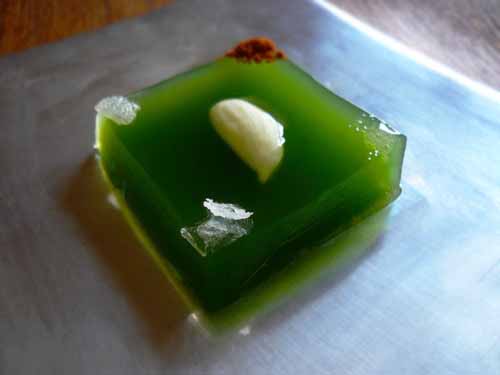

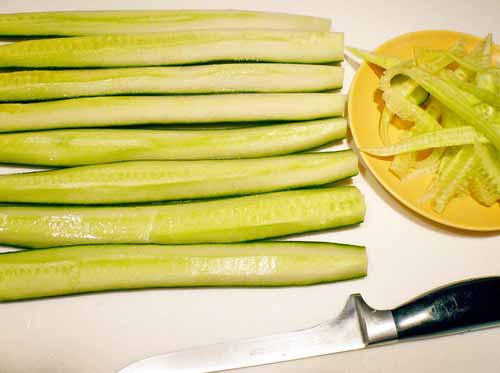

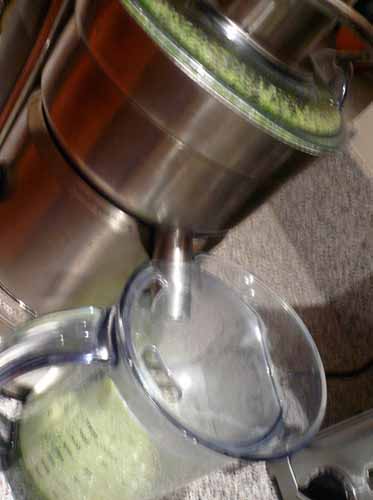
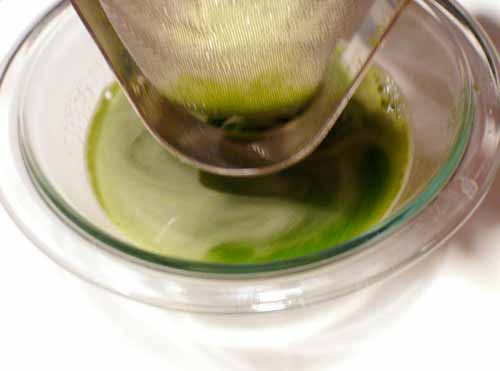


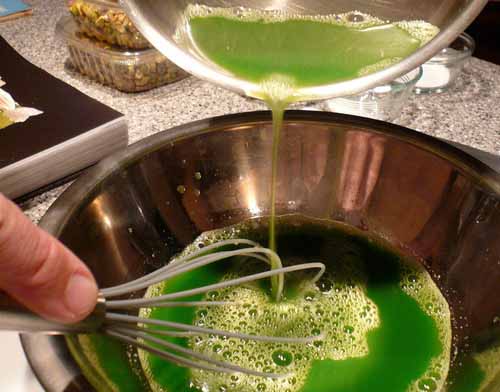
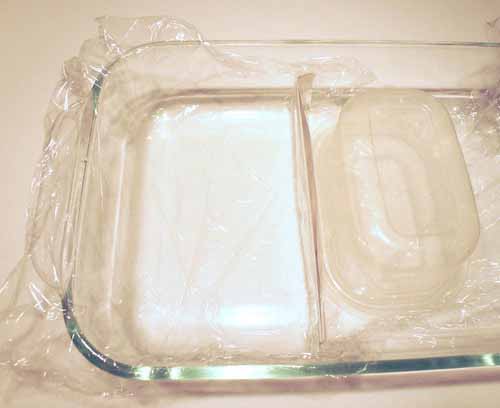
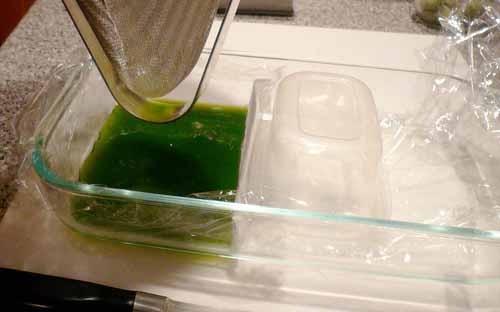

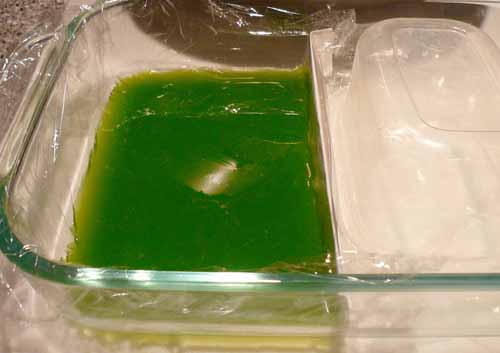
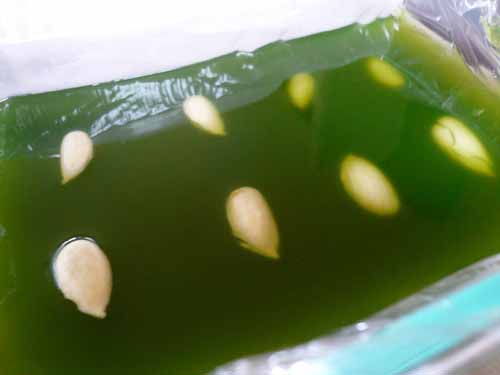

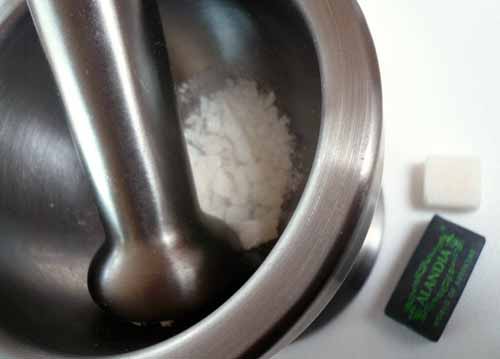
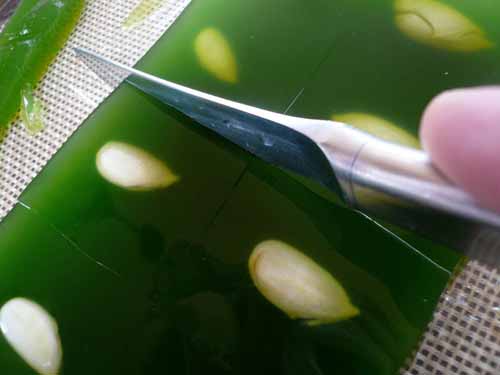
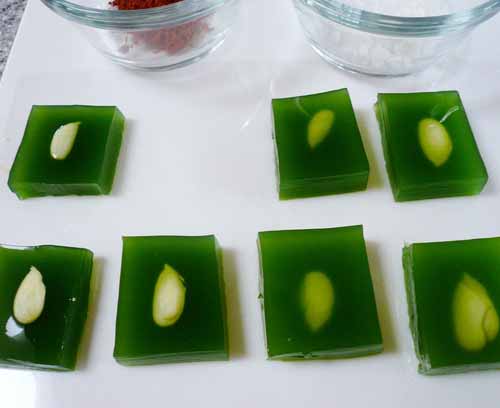
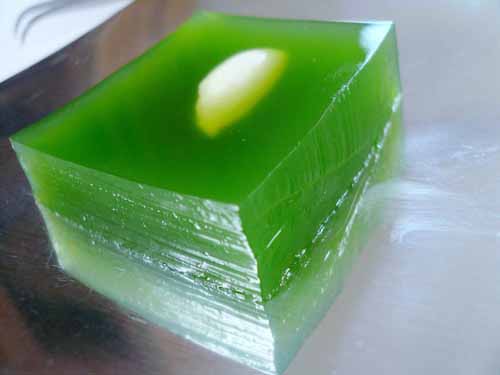
5 Responses to GREEN ALMOND, Sweet, Hot, Sour, Salt